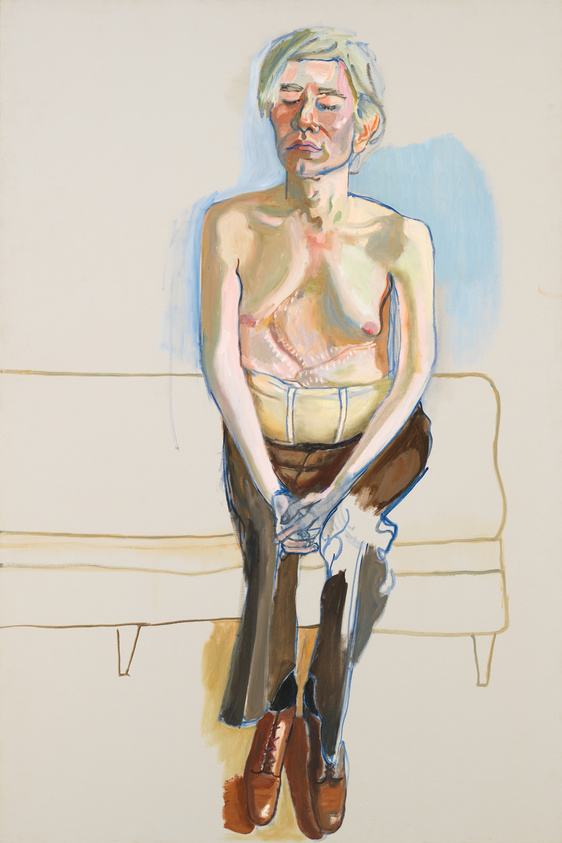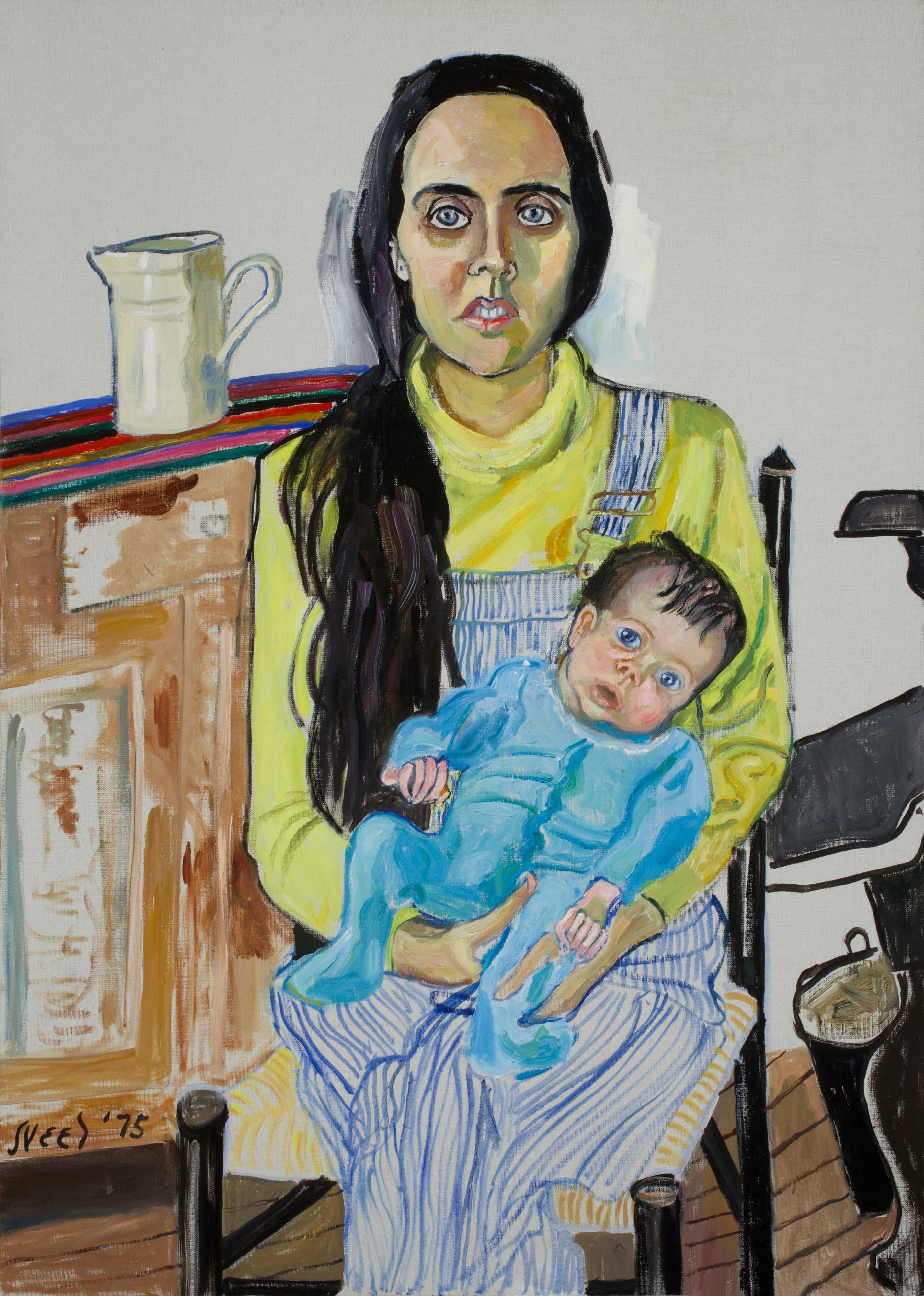Type | |
Stats | 61 9 27 |
Reviews | (11) |
Published | May 23, 2025 |
Base Model | |
Training | Steps: 8,800 Epochs: 10 |
Usage Tips | Strength: 1 |
Trigger Words | aliceneel2 painting |
Hash | AutoV2 F8734E1B79 |
Trained on 44 paintings by the American artist Alice Neel (January 28, 1900 – October 13, 1984). To see her works, please go to
flickr.com/photos/42506328@N06/albums/72177720295419047/with/51782532045
flickr.com/photos/198315834@N02/albums/72177720312872688/with/53348990671
flickr.com/photos/152024994@N03/galleries/72157721010397145/with/51956003042
flickr.com/photos/91590072@N04/albums/72157638395543845x/with/11229972065
From ChatGPT:
 Neel in her studio, photographed by Lynn Gilbert (1976)
Neel in her studio, photographed by Lynn Gilbert (1976)
Alice Neel (January 28, 1900 – October 13, 1984)
Movement: Social Realism, Expressionism
1. Early Life and Education
Born in Merion Square, Pennsylvania, Alice Neel grew up in a conservative household, yet her curiosity about human nature flourished early.
She studied at the Philadelphia School of Design for Women (now Moore College of Art & Design), where she honed her technical skills while gravitating toward social realism.
After graduating in 1925, she married Cuban artist Carlos Enríquez and moved to Havana, where she immersed herself in Cuban avant-garde art circles.
2. Personal Hardship and Artistic Struggles
Neel’s early life was marked by immense personal tragedy. After her daughter died in infancy, her husband took their surviving child back to Cuba, leaving Neel devastated.
This period of emotional turmoil profoundly shaped her art, driving her to explore themes of grief, resilience, and psychological depth.
Throughout the Great Depression, Neel struggled financially, relying on WPA (Works Progress Administration) commissions to sustain her artistic career.
3. Artistic Style and Themes
Neel’s work is best known for its distinctive blend of expressionism and realism, characterized by her penetrating portraits.
Portraiture as Social Commentary
Neel defied the norms of her time, focusing not on idealized beauty but on emotional authenticity.
Her subjects ranged from family and friends to political activists, artists, immigrants, and marginalized individuals.
Neel painted people from diverse racial, social, and economic backgrounds, challenging class and cultural stereotypes.
Emotional Depth and Honesty
Her portraits are intimate, often portraying her subjects in vulnerable, unguarded states — tired, anxious, or contemplative.
Use of Color and Form
Neel’s bold, expressive color choices heightened emotional intensity.
She frequently outlined her subjects with strong blue or black lines, creating a sense of immediacy.
Backgrounds were often loosely painted or abstract, focusing attention on the subject’s gaze and body language.
4. Notable Works
✅ Andy Warhol (1970) — A haunting portrait of Warhol shirtless, wearing a medical corset, his scars exposed — a powerful reflection on fame and vulnerability.

✅ Pregnant Maria (1964) — A raw depiction of a pregnant woman, emphasizing the power and physicality of motherhood.

✅ T.B. Harlem (1940) — A poignant portrayal of a young Black man recovering from tuberculosis, addressing both social inequality and human resilience.

✅ James Hunter Black Draftee (1965) — A powerful commentary on race and the Vietnam War, painted in stark and arresting tones.

5. Activism and Politics
Neel was deeply involved in leftist politics, aligning with workers’ movements and social justice causes.
She painted prominent political figures, including communist leaders, civil rights activists, and feminist icons.
Her empathy for marginalized groups was central to her work, reflecting a deep commitment to social awareness.
6. Later Recognition and Legacy
Although Neel worked for decades in relative obscurity, her career experienced a major revival in the 1970s as feminist movements embraced her as a trailblazer.
Major retrospectives at institutions like the Whitney Museum of American Art solidified her place in American art history.
Neel’s work remains influential for its fearless honesty and its celebration of human complexity.
7. Legacy and Influence
Neel is now regarded as one of the most significant portrait artists of the 20th century.
Her bold depictions of social issues, gender, and race continue to inspire contemporary artists.
Neel’s refusal to conform to commercial trends has positioned her as an enduring voice in the conversation about identity, representation, and empathy.
Conclusion
Alice Neel’s art is a testament to the beauty and complexity of the human experience. Her fearless honesty, emotional depth, and commitment to portraying marginalized voices solidify her as a pioneering figure in modern portraiture.
Alice Neel’s portraits are strikingly intimate, emotionally raw, and unapologetically honest. Her style blends elements of realism with expressive distortion, focusing less on idealized beauty and more on psychological depth.
Key Characteristics of Alice Neel's Portraits:
🎨 Emotional Intensity: Neel’s subjects often appear vulnerable, contemplative, or even defiant. Her work captures not just their physical features, but their inner psyche — anxieties, strength, or melancholy.
🎨 Expressive Linework: Neel’s brushstrokes are loose yet deliberate. Her bold outlines, often in blue or black, define her subjects with energy and spontaneity.
🎨 Vivid Colors: She employed striking color palettes — bright, unconventional hues — that amplified mood and character. Contrasting tones often emphasized tension or drama.
🎨 Unvarnished Realism: Neel frequently painted her subjects with unflinching honesty, highlighting wrinkles, sagging skin, or tired eyes. This raw authenticity was central to her power as a portraitist.
🎨 Emphasis on Identity: Neel painted people from all walks of life — friends, family, artists, activists, and marginalized individuals. She often included symbolic objects, body language, and expressive gazes to explore themes of class, race, and gender.
Notable Examples:
✅ Andy Warhol (1970) — A haunting portrait of Warhol shirtless, wearing a medical corset, his scars exposed — a powerful reflection on fame and vulnerability.

✅ Pregnant Maria (1964) — A raw depiction of a pregnant woman, emphasizing the power and physicality of motherhood.

✅ Ginny and Elizabeth (1975) — A tender yet complex portrait of a mother with her child, balancing warmth with a sense of unease.

Overall Impact:
Neel’s portraits feel deeply human — raw yet empathetic, revealing the complexities of her subjects rather than idealizing them. Her ability to capture vulnerability and authenticity cemented her as a groundbreaking figure in 20th-century portraiture.


